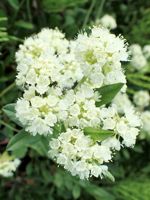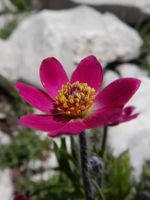Mon-Fri 9am - 5pm Mountain time
Cutleaf Anemone vs Sulphur-Flower Buckwheat
Eriogonum umbellatum
Anemone multifida
CUSTOM GROW
NOT AVAILABLE THIS SEASON - MIGHT RETURN
Sulphur-Flower Buckwheat is a native perennial wildflower known for its dense clusters of cream to yellow flowers. The long-lasting blooms persist from late spring into summer, providing an extended nectar source for a variety of pollinators. The flower buds are often red-tinted before opening. As the blooms age, they shift to orange or red, adding seasonal interest and making them well-suited to dried flower arrangements. Its seeds are also eaten by birds, adding to its ecological value.
Depending on climate and conditions, Sulphur-Flower Buckwheat may be evergreen to semi-evergreen, or its foliage may turn red during fall. Its deep roots and spreading growth stabilize rocky or sandy soils, making it useful for erosion control. Exceptionally hardy once established, it requires little care and thrives in challenging environments, making it an excellent choice for pollinator gardens, naturalization, and ecological restoration projects.
Pacific Anemone is a native perennial wildflower with buttercup-like blooms. The flowers can be a variety of colors, including white, pink, and dark red. The deeply cut leaves add a unique texture to the landscape. The flowers bloom from May to August, providing early-season nectar and pollen for insects. They attract a variety of pollinators, including bees and butterflies.
As the flowers fade, they become fluffy white seed heads, which birds often use in their nests. They can spread readily through self-seeding; to limit their spread, regular deadheading is recommended. Tolerant of drought and poor soils, the Pacific Anemone is well suited for wildflower gardens, pollinator gardens, and naturalization projects.

